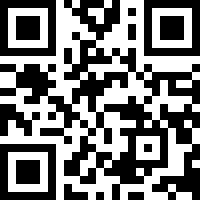In past articles, we’ve talked about a variety of counterfeit goods. From medicine to pet food to electronics, we’ve posted about supply chains, health issues resulting from counterfeit drugs, and responsible pet ownership. However, for virtually everything you use in your everyday life, there is still a chance it could be fake. By fake, we mean that it is made by a company misrepresenting itself as the real or recognized company or brand, made from inferior or used parts, or is itself inferior or used. While some things are easy to identify – that Somy TV at the shady electronics store probably isn’t legit – others can be much more difficult, especially if the pieces used to make it are what’s causing it to be false.
Today we’ll be talking about designer handbags.
Handbag Clinic, a UK-based handbag retailer, and repair franchise, has an excellent guide on how to authenticate a Mulberry handbag. If you are in the market for something like this, then there are things you need to be aware of to ensure you get a genuine article.
First, there are attributes which no pattern can replicate. The materials used to make and finish a handbag have a distinct weight, smell, and texture. (This author personally finds the smell of good leather to be particularly pleasant.) If you’re purchasing a handbag online, which as we’ve said in the past increases the odds you’ll be receiving counterfeit goods, you won’t be able to test these things for yourself. You can only feel and smell an object in person, so a brick and mortar shop is usually your best option.
Each model made by Mulberry has a different style of manufacture. Certain models feature lining, for example, while others don’t. It’s important to familiarize yourself with these details before buying a potentially expensive accessory and finding it to be fraudulent later. Likewise, counterfeit handbags can be given away by the quality of their stitching and edging. Genuine products tend to have consistent stitching and clean edging, while fake ones will have loose stitching and messy edging. The metal bits, called hardware, can also give away a bootleg bag. Mulberry bags have a distinctive stamped name on the tag and tree logo on the zipper and rivets while fake ones do not. Even the brand of zipper used is exclusive.
The country of manufacture can vary. While Mulberry is a well-known British brand, less than a third of their handbags are produced in England anymore. It’s not uncommon to see “Made in Turkey” or “Made in China” on a genuine Mulberry bag these days.
Finally, for those who are fully committed to getting a genuine Mulberry handbag, there are serial numbers printed on every product (except for very old ones). While fake articles may also feature serial numbers, the article linked to above has a guide for how to tell them apart from real ones.
Now, hopefully, our readers who enjoy handbags will find this blog post to be useful. For everyone else, I understand why you might wonder at our spending an entire post on counterfeit handbags, especially when we’ve written so many words already on (arguably) more important topics such as medicine, food, and electronics. Simply put, counterfeit goods hurt the marketplace as a whole, whether they are medications or retail merchandise.
Business and commerce are built upon trust. A customer needs to be able to believe that what they’re buying is real, or at least accurately represented. A person who buys anything, from a handbag to life-saving medicine, will lose faith in the retailer, and possibly even the system if they continue to receive inferior or even harmful fake goods. We’ll be discussing in further detail how counterfeit products impact the economy, but for now, you’ve just learned how to tell a real Mulberry handbag from a fake one.
At IDLogic, our blockchain-power supply chain tracking and tracing technology would make your inspections unnecessary, making sure the buyer is always receiving exactly what they wanted.

